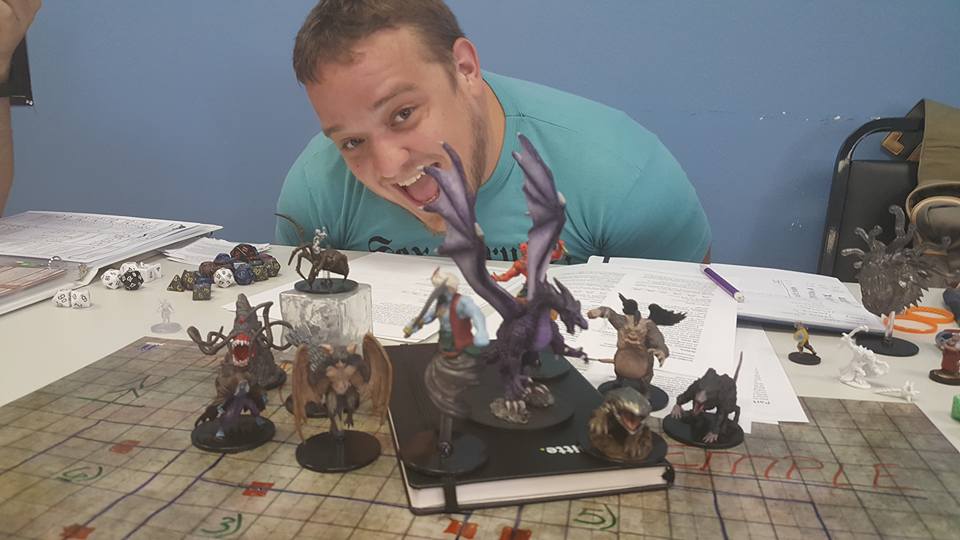
The Art of Improvisation: How to Think on Your Feet as a DM
As a Dungeon Master, you might have meticulously planned your session, crafting every detail of the world, the NPCs, and the encounters. But then, your players do something completely unexpected.
Maybe they befriend the villain instead of fighting. Maybe they decide to travel in the opposite direction of your planned adventure. Maybe they set the tavern on fire—just because.
At moments like these, you have two choices: Panic… or embrace the chaos.
Welcome to the art of improvisation, where your ability to adapt is just as important as your ability to plan. Being a great DM isn’t about controlling the game—it’s about creating a story together with your players, even when they throw you a curveball.
So how do you think on your feet without losing the magic of the game? Let’s break it down.
1. Say "Yes, and..." (The Golden Rule of Improv)
One of the core principles of improvisation, whether in theater or D&D, is the concept of “Yes, and…”.
This means that instead of shutting down your players’ wild ideas, you build on them. Even if something wasn’t planned, you find a way to make it work within the story.
Example: The Villain Who Became a Friend
Your players meet the big bad evil guy (BBEG) for the first time. You’ve spent hours designing this terrifying antagonist. But instead of fighting him, the party’s bard rolls a natural 20 on persuasion, saying:
"Listen, we don’t have to fight. Maybe we can talk this out over drinks?"
Now, you have a choice. You could force combat anyway (which could feel like railroading), or you could improvise:
- Maybe the villain is intrigued by the offer but has a secret ulterior motive.
- Maybe this becomes a tense social encounter instead of a battle.
- Maybe the party thinks they’ve turned him to their side… but he’s just waiting to betray them later.
By rolling with the players’ choices, you give them a sense of agency, making the story more dynamic and engaging.
📌 Resource: Keith Johnstone’s "Impro" is a fantastic book on improv techniques that can be applied to DMing.
2. Keep a Toolbox of Random Ideas
Even the best DMs need a backup plan when things go off-script. One of the easiest ways to prepare for improvisation is to have a bank of ideas ready to go.
Here’s what you can keep handy:
- Random NPC generator: Sites like Donjon or D&D Beyond can help you instantly create a name, personality, and backstory.
- Encounter tables: A quick chart of generic combat, exploration, or roleplay encounters can fill in unexpected gaps.
- Plot Twist Prompts: If players throw your story off-course, have a few surprises ready. Maybe a character has a secret past, or an NPC they trusted is not who they seem.
Example: The Mysterious Stranger
Your players decide to visit a town you haven’t fleshed out yet. Instead of stalling, you introduce a mysterious NPC on the spot:
"A cloaked figure watches you from across the tavern, a faint smirk playing at their lips. They seem to recognize you..."
Now, your players are hooked, and you’ve bought yourself time to figure out how this new character fits into the world.
📌 Resource: Check out The Game Master's Book of Random Encounters by Jeff Ashworth—it’s packed with ready-to-go ideas!
3. Let the Players Fill in the Gaps
Improvisation doesn’t mean you have to do all the work. One of the best tricks is to turn the tables and let the players contribute.
Example: The Hidden Door
The rogue rolls a high perception check and asks, "Is there a secret passage here?"
Instead of flipping through notes, you can say:
"There is now! But tell me—what does it look like, and how do you think it opens?"
This invites the players to be co-creators, which not only saves you work but makes them feel more invested in the world.
📌 Resource: "The Lazy Dungeon Master" by Sly Flourish teaches you how to prepare less and improvise more.
4. Embrace Failure and Chaos
Not every improvisation will be perfect. Sometimes, you’ll make plot holes, introduce contradictions, or accidentally create a joke NPC that the players become obsessed with. That’s okay!
Example: The Accidental Fan-Favorite
You quickly invent "Grog the Goblin Merchant" to stall for time… and now the players won’t leave him alone.
Instead of trying to force the game back to your original story, lean in:
- Maybe Grog has valuable information about the next dungeon.
- Maybe he’s secretly a retired warrior with a legendary past.
- Maybe the villain is his long-lost cousin.
Some of the best D&D moments come from happy accidents.
📌 Resource: Matt Mercer’s DM Tips on YouTube include great advice on embracing unexpected player choices.
5. Trust Yourself—You Know More Than You Think
At the end of the day, improvisation isn’t about being perfect—it’s about being confident.
You know your world. You know your players. If something goes off-script, trust yourself to make a call and move forward.
Because here’s the secret: Your players don’t know what was "supposed" to happen.
Final Thought: The Illusion of Preparation
Even the most well-planned campaign will eventually require improvisation. And when it does? Fake it like you meant to do it all along.
Your players will think you're a genius.
TL;DR - The Quick DM Improvisation Guide
✅ Say “Yes, and…” to build on player ideas.
✅ Keep random generators and backup plans handy.
✅ Let players contribute to the world.
✅ Embrace the chaos and unexpected fan favorites.
✅ Trust yourself—you know more than you think.
So next time your players derail the story, don’t panic. Take a deep breath, roll with it, and remember:
The best stories aren’t the ones we plan. They’re the ones we discover together. 🎲✨
Now go forth, Dungeon Masters—and improvise boldly.
